 W
WActive Body Control, or ABC, is the Mercedes-Benz brand name used to describe hydraulic fully active suspension, that allows control of the vehicle body motions and therefore virtually eliminates body roll in many driving situations including cornering, accelerating, and braking. Mercedes-Benz has been experimenting with these capabilities for automobile suspension since the air suspension of the 1963 600 and the hydropneumatic suspension of the 1974 6.9.
 W
WActive Power Stabilizer Suspension System (APSSS), is an electric active suspension system with active anti-roll bars developed by Toyota Motor Corporation for its high-end vehicles including Lexus models. By altering stabilizer bar stiffness, this system acts to reduce body tilt during cornering, keeping the vehicle more level during turns and improving handling, as opposed to the natural tendency of a vehicle to roll due to the lateral forces experienced during high-speed maneuvering. The active stabilizer system relies on vehicle body sensors and electric motors. The first production usage of this system was introduced in August 2005 with the Lexus GS430 sport sedan, followed by the 2008 Lexus LS 600h luxury sedan. The development of APSSS is claimed to be the world's first electric active stabilizer system. It is a system improvement of an earlier Toyota technology called Toyota TEMS.
 W
WAdaptive cruise control (ACC) is an available cruise control advanced driver-assistance system for road vehicles that automatically adjusts the vehicle speed to maintain a safe distance from vehicles ahead. As of 2019, it is also called by 20 unique names that describe that basic functionality. This is also known as Dynamic cruise control.
 W
WBlue&Me is an integrated in-vehicle infotainment system used worldwide on many vehicles marketed by Fiat Chrysler Automobiles (FCA) from model years 2006–2017. With the exception of the Ford Ka, which is a lightly modified Fiat 500, the system is exclusive to Abarth, Alfa Romeo, Fiat and Lancia cars and to Fiat Professional's light commercial vehicles
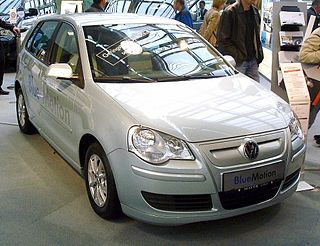 W
WBlueMotion is a tradename for certain car models from the Volkswagen Group with an emphasis on higher fuel efficiency.
 W
WCarPlay is an Apple standard that enables a car radio or head unit to be a display and a controller for an iOS device. It is available on all iPhone models beginning with iPhone 5 running iOS 7.1 or later.
 W
WCarWings, renamed NissanConnect in 2015, and also branded as Infiniti InTouch is a vehicle telematics service offered by the Nissan Motor Company to drivers in Japan, the United States, Canada, Great Britain, and most other countries where the LEAF is sold. It provides mobile connectivity for on-demand traffic information services and internet provided maps displayed inside select Nissan vehicles. The service began in December 1997, having been installed in the 1997 Nissan Cedric, Nissan Gloria, Nissan President, Nissan Cima and the Nissan Elgrand.
 W
WCockpit Management and Data system - COMAND for short - acts as a combined command and control centre for all audio, telematics and telecommunications functions on Mercedes-Benz vehicles and includes a dedicated flat display screen. In addition to the GPS navigation system and general processing and control logic, COMAND includes components such as an address book, telephone, radio and in many cases a CD/DVD drive. It is connected to other devices such as CD/DVD changers, sound system and surround sound amplifier, TV receiver and the optional Linguatronic voice control system via an optical fibre network. The first generations of COMAND used the D2B optical network standard whereas later models are based on MOST.
 W
WThe Comstar wheel, sometimes referred to as Com-stars or stylised as ComStar, was a composite motorcycle wheel that Honda fitted to many of its motorcycles from 1977 to the mid 1980s. Its design allowed it the option of being fitted with tubeless tyres and its use on the Honda CX500 was the first time tubeless tyres had been designed for a production motorcycle.
 W
WCVCC, or Compound Vortex Controlled Combustion , is an internal combustion engine technology developed and trademarked by the Honda Motor Company.
 W
WDiesel exhaust fluid is a liquid used to reduce the amount of air pollution created by a diesel engine. Specifically, DEF is an aqueous urea solution made with 32.5% urea and 67.5% deionized water. DEF is consumed in selective catalytic reduction (SCR) that lowers the concentration of nitrogen oxides in the diesel exhaust emissions from a diesel engine.
 W
WThe Digifant engine management system is an electronic engine control unit (ECU), which monitors and controls the fuel injection and ignition systems in petrol engines, designed by Volkswagen Group, in cooperation with Robert Bosch GmbH.
 W
WThe driver monitoring system, also known as driver attention monitor, is a vehicle safety system to assess the driver's alertness and warn the driver if needed and eventually apply the brakes. It was first introduced by Toyota in 2006 for its and Lexus latest models. It was first offered in Japan on the GS 450h. The system's functions co-operate with the pre-collision system (PCS). The system uses infrared sensors to monitor driver attentiveness. Specifically, the driver monitoring system includes a CCD camera placed on the steering column which tracks the face, via infrared LED detectors. If the driver is not paying attention to the road ahead and a dangerous situation is detected, the system will warn the driver by flashing lights, warning sounds. If no action is taken, the vehicle will apply the brakes. This system is said to be the first of its kind.
 W
WECOnetic is a tradename for certain car models produced by Ford of Europe, currently consisting of one model in each of the Fiesta, the Focus and the Mondeo range, with an emphasis on higher fuel efficiency and low-CO2 emissions.
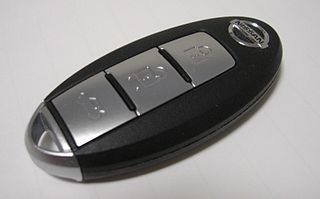 W
WA smart key is an electronic access and authorization system that is available either as standard equipment, or as an option in several car designs. It was first developed by Siemens in 1995 and introduced by Mercedes-Benz under the name "Keyless-Go" in 1998 on the W220 S-Class, after the design patent was filed by Daimler-Benz on May 17, 1997.
 W
WElectronic stability control (ESC), also referred to as electronic stability program (ESP) or dynamic stability control (DSC), is a computerized technology that improves a vehicle's stability by detecting and reducing loss of traction (skidding). When ESC detects loss of steering control, it automatically applies the brakes to help steer the vehicle where the driver intends to go. Braking is automatically applied to wheels individually, such as the outer front wheel to counter oversteer, or the inner rear wheel to counter understeer. Some ESC systems also reduce engine power until control is regained. ESC does not improve a vehicle's cornering performance; instead, it helps reduce the chance of the driver losing control of the vehicle.
 W
WEverflex is a British fabric used as a roof covering on cars, and is a type of vinyl roof. Everflex is used on both hardtops and convertibles.
 W
WG-Book is a telematics subscription service provided by Toyota Motor Corporation in Japan for its Toyota- and Lexus-branded vehicles. G-Book allows users to link with cellphones. personal digital assistants (PDA)'s, personal computers (PC) and G-Book equipped cars across Japan. It is based on the former GAZOO infrastructure of Toyota's membership-based information service and membership system, and it provides interactive information services via vehicle installed touch-screen wireless communication terminals. It also incorporates information from Toyota Mapmaster Inc. which updates digital mapping information and is used by various international companies.
 W
WHydropneumatic suspension is a type of motor vehicle suspension system, designed by Paul Magès, invented by Citroën, and fitted to Citroën cars, as well as being used under licence by other car manufacturers, notably Rolls-Royce, Maserati and Peugeot. It was also used on Berliet trucks and has more recently been used on Mercedes-Benz cars, where it is known as Active Body Control. The Toyota Soarer UZZ32 "Limited" was fitted with a fully integrated four-wheel steering and a complex, computer-controlled hydraulic Toyota Active Control Suspension in 1991. Similar systems are also widely used on modern tanks and other large military vehicles. The suspension was referred to as oléopneumatique in early literature, pointing to oil and air as its main components.
 W
WIntegrated Motor Assist is Honda's hybrid car technology, introduced in 1999 on the Insight. It is a specific implementation of a parallel hybrid. It uses an electric motor mounted between the internal combustion engine and transmission to act as a starter motor, engine balancer, and assist traction motor.
 W
WIntelligent Parking Assist System (IPAS), also known as the Advanced Parking Guidance System (APGS) for Toyota models in the United States, is the first production automatic parking system developed by Toyota Motor Corporation in 1999 initially for the Japanese market hybrid Prius models and Lexus models. The technology assists drivers in parking their vehicle. On vehicles equipped with the IPAS, via an in-dash screen and button controls, the car can steer itself into a parking space with little input from the user. The first version of the system was deployed on the Prius Hybrid sold in Japan in 2003. In 2006, an upgraded version debuted for the first time outside Japan on the Lexus LS luxury sedan, which featured the automatic parking technology among other brand new inventions from Toyota. In 2009, the system appeared on the third generation Prius sold in the U.S. In Asia and Europe, the parking technology is marketed as the Intelligent Park Assist System for both Lexus and Toyota models, while in the U.S. the Advanced Parking Guidance System name is only used for the Lexus system.
 W
WInternavi is a vehicle telematics service offered by the Honda Motor Company to drivers in Japan. In the United States, the service is known as HondaLink, or sometimes MyLink. It provides mobile connectivity for on-demand traffic information services and internet provided maps displayed inside selected Honda vehicles. The service began August 1997 and was first offered in the 1998 Honda Accord and the Honda Torneo sold only in Japan starting July 1998. The service received a revision to services offered October 2002, adding traffic information delivery capabilities for subscribers to the Internavi Premium Club, and was optional on most Honda vehicles sold in Japan. VICS was integrated into the service starting September 2003. Membership in the service has steadily grown to exceed 5 million subscribers as of March 2007.
 W
WUVO eServices is a subscription-free OEM infotainment and telematics service offered by Kia Motors America on select vehicles for the United States market. The system allows users to make hands-free calls on their smartphone, stream music, navigate to a POI, and perform vehicle diagnostics with the use of voice commands.
 W
WThe Kinetic Dynamic Suspension System (KDSS) technology was employed initially in the Lexus GX 470, and subsequently the 200 Series Toyota Land Cruiser. The system was invented and developed by Kinetic Pty Ltd, a small R&D company based in Dunsborough, Western Australia. It optimally adjusts front and rear stabilizers based on a set of interconnected hydraulic cylinders. The interconnection is made up of hydraulic piping and a control cylinder which is located at the frame rail. KDSS, which is fully mechanical, can disengage the stabilizer bars. This system will not engage during normal driving conditions, when hydraulic pressure is equal. In off-road conditions, KDSS activates when it senses that a wheel has dropped.
 W
WLexus Link, launched October, 2000, is a subscription-based safety and security service from Lexus. It has been offered as a factory-installed option, available on certain Lexus models, offering call-center-based telematics services to owners with equipped vehicles in the United States and Canada. The second-generation Lexus Link system utilizes a dedicated cellular phone, Global Positioning Satellite (GPS) technology and 24-hour live-operator support. In 2009, an expanded system with added functionality, Lexus Enform with Safety Connect, succeeded Lexus Link.
 W
WIsuzu Motors Ltd. , trading as Isuzu, is a Japanese commercial vehicle and diesel engine manufacturing company headquartered in Tokyo. Its principal activity is the production, marketing and sale of Isuzu commercial vehicles and diesel engines.
 W
WMitsubishi MCA stands for Mitsubishi Clean Air, a moniker used in Japan to identify vehicles built with emission control technology. The term was first introduced in Japan, with later introductions internationally. The technology first appeared in January 1973 on the Mitsubishi 4G32A gasoline-powered inline four cylinder engine installed in all Mitsubishi vehicles using the 4G32 engine, and the Saturn-6 6G34 six-cylinder gasoline-powered engine installed in the Mitsubishi Debonair. The technology was installed so that their vehicles would be in compliance with Japanese Government emission regulations passed in 1968.
 W
WMobileye is an Israeli subsidiary of Intel that develops self-driving cars and advanced driver-assistance systems (ADAS). Mobileye headquarters and main Research & Development centre is located in Jerusalem operating under the company name Mobileye Vision Technology Ltd. The company also has sales and marketing offices in Midtown, Manhattan, US; Shanghai, China; Tokyo, Japan and Düsseldorf, Germany.
 W
WMotronic is the trade name given to a range of digital engine control units developed by Robert Bosch GmbH which combined control of fuel injection and ignition in a single unit. By controlling both major systems in a single unit, many aspects of the engine's characteristics can be improved.
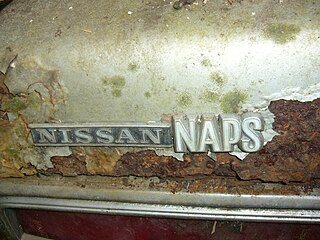 W
WNAPS stands for Nissan Anti Pollution System a moniker used in Japan to identify vehicles built with emission control technology. The technology was installed so that their vehicles would be in compliance with Japanese Government emission regulations passed in 1968. The term was first introduced in Japan, with an externally mounted badge on the trunk of vehicles equipped. Nissan's implementation began with the Y44E V8 engine installed in the Nissan President along with all vehicles installed with the Nissan L engine and the Nissan A engine in 1975. The initial introduction of Nissan's technology was the installation of an exhaust gas recirculation valve, followed with the addition of a catalytic converter and an air pump that added oxygen into the exhaust to promote higher temperatures in the catalytic converter, thus cleaning the exhaust further.
 W
WThe Northstar engine is a family of high-performance 90° V engines produced by General Motors between 1993 and 2011. Regarded as GM's most technically complex engine, the original double overhead cam, four valve per cylinder, aluminum block/aluminum head V8 design was developed by Oldsmobile R&D, but is most associated with Cadillac's Northstar series.
 W
WOnStar Corporation is a subsidiary of General Motors that provides subscription-based communications, in-vehicle security, emergency services, hands-free calling, turn-by-turn navigation, and remote diagnostics systems throughout the United States, Canada, China, Mexico, Europe, Brazil, and Argentina.
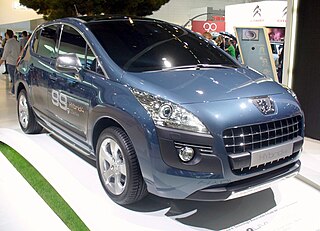 W
WThis article is about the 1st gen HYbrid4 system (2011-2016).
 W
WRemote Touch is a vehicle interface system present in some Lexus cars for use in conjunction with in-car information, configuration, and entertainment systems. The Remote Touch controller, which is similar to a computer mouse or joystick, allows the driver to operate an on-screen cursor on the vehicle's GPS navigation system screen.
 W
WSaab Direct Ignition is a capacitor discharge ignition developed by Saab Automobile, then known as Saab-Scania, and Mecel AB during the 1980s.
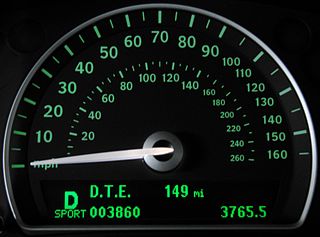 W
WSaab Information Display (SID) later also called "Saab Car Computer" (SCC) is the name for various in-car computer systems found on most Saab automobiles beginning in 1985 with the Saab 9000 and followed in 1994 with the Saab 900 NG.
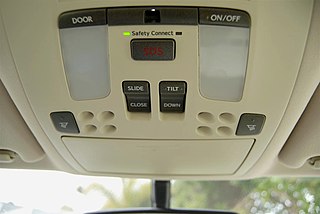 W
WSafety Connect is a subscription-based telematics system introduced by Toyota Motor Corporation in 2009 for its Toyota-branded and Lexus models. The system provides communications, roadside assistance, car safety, remote diagnostics, and other services. Unlike the earlier Lexus Link service offered on Lexus models, the Safety Connect system is proprietary and not licensed from GM's OnStar service. Safety Connect began to be offered on vehicles in the middle of 2009. For Toyota vehicles, the Safety Connect service is offered including the aforementioned features as part of the Toyota Entune telematics package, while Lexus models receive the Lexus Enform telematics system with Safety Connect, adding hands free calling, and destination assistance services.
 W
WSelespeed is the name of an automated manual transmission used in Alfa Romeo cars, developed by Italian company Magneti Marelli and made by Graziano Trasmissioni.
 W
WTesla Autopilot is a suite of advanced driver-assistance system features offered by Tesla that amounts to Level 2 vehicle automation. Its features are lane centering, traffic-aware cruise control, self-parking, automatic lane changes, semi-autonomous navigation on limited access freeways, and the ability to summon the car from a garage or parking spot. In all of these features, the driver is responsible and the car requires constant supervision. The company claims the features reduce accidents caused by driver negligence and fatigue from long-term driving. In October 2020, Consumer Reports called Tesla Autopilot "a distant second" in driver assistance systems, although it was ranked first in the "Capabilities and Performance" and "Ease of Use" category.
 W
WTorsen Torque-Sensing is a type of limited-slip differential used in automobiles.
 W
WToyota TTC stands for Toyota Total Clean System, a moniker used in Japan to identify vehicles built with emission control technology. The technology was installed so that their vehicles would be in compliance with Japanese Government emission regulations passed in 1968. The term was first introduced in Japan, with an externally mounted badge on the trunk of vehicles equipped. The technology first appeared in January 1975 on the Toyota Crown, the Toyota Corona Mark II, the Toyota Corona, the Toyota Carina, the Toyota Corolla, and the Toyota Sprinter. There were three different versions initially introduced, called TTC-C for Catalyst, installing a catalytic converter, TTC-V for Vortex, installing an exhaust gas recirculation valve, and TTC-L which used a lean burn method. As Toyota's technology evolved the three systems were eventually incorporated together in future models.
 W
WThe Tweel is an airless tire design developed by the French tire company Michelin. Its significant advantage over pneumatic tires is that the Tweel does not use a bladder full of compressed air, and therefore cannot burst, leak pressure, or become flat. Instead, the Tweel's hub is connected to the rim via flexible polyurethane spokes which fulfil the shock-absorbing role provided by the compressed air in a traditional tire.
 W
WThe Weather Eye was a trade name for a Nash Motors-designed fresh-air system for automobile passenger compartment heating, cooling, and ventilating. The Nash "All-Weather Eye" was the first automobile air conditioning system for the mass market. The use of the Weather Eye name for automobile passenger heating and air conditioning systems continued in American Motors Corporation (AMC) vehicles.